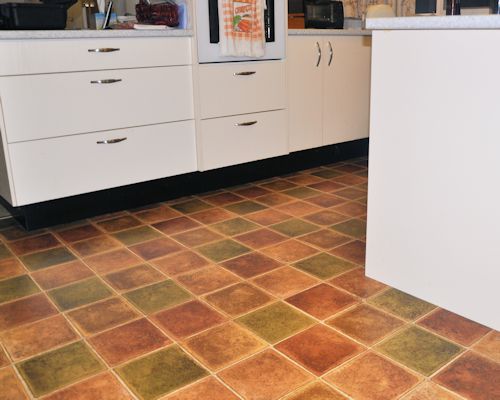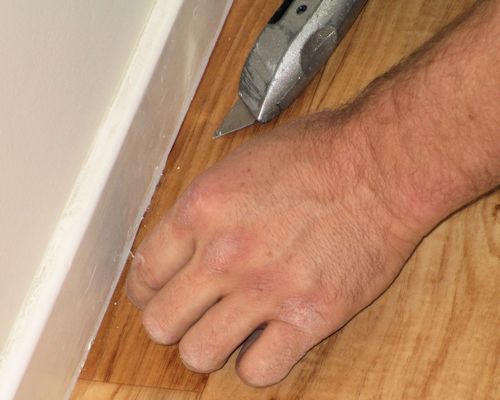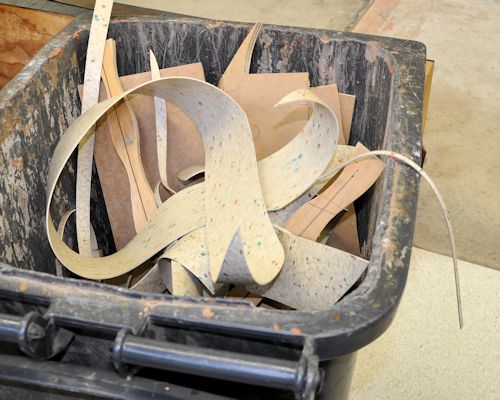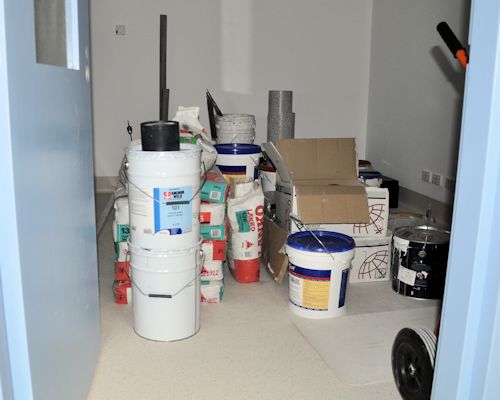Finishing the job
 Audio for slide 3 (mp3 |6|KB)
Audio for slide 3 (mp3 |6|KB)
Protecting the new floor
On projects where it's your job to move heavy appliances back into position, use plywood panels or other board products as protection underneath the appliance.
Slide the first board under the object as you lift it off the floor one side at a time.
Then put another board beside the first one and push the object over the boards.
Don't roll or drag the object directly across the new flooring material.

 Audio for slide 4 (mp3 |6|KB)
Audio for slide 4 (mp3 |6|KB)
If you're leaving the client to move the appliances themselves, give them instructions on how to do it properly so they don't put a tear or buckle in the floor covering.
Even objects on wheels or casters need to be pushed across wood panels, because if the adhesive isn't fully cured they'll leave grooves in the floor surface.
Commercial floors should be protected from rolling loads for at least 72 hours after the installation is finished.

Even objects on wheels or casters need to be pushed across wood panels, because if the adhesive isn't fully cured they'll leave grooves in the floor surface.
Commercial floors should be protected from rolling loads for at least 72 hours after the installation is finished.

 Go to Assignment
Go to Assignment



